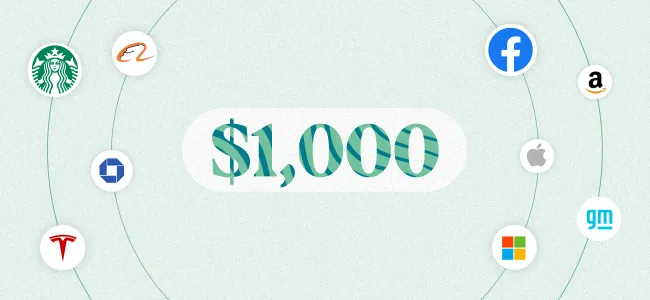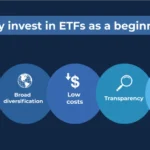Turning $1,000 into $10,000 may sound like a dream, but with the right strategies, patience, and discipline, it’s a realistic goal. The key is to understand that building wealth isn’t about chasing quick wins—it’s about using proven investment methods, minimizing risk, and compounding your money over time.
In 2025, there are more opportunities than ever before to grow your money thanks to technology, online platforms, and accessible investment tools. In this guide, we’ll explore practical strategies that can help you multiply your $1,000 investment into $10,000 and beyond.
Understanding the Foundation: How Money Grows
Before diving into strategies, it’s important to understand two key principles of wealth-building:
1. Compound Growth
Compounding means your money earns returns, and those returns earn returns. Over time, this snowball effect can turn even small investments into large sums.
2. Risk vs. Reward
Higher rewards usually come with higher risks. Smart investors balance aggressive growth opportunities with safe, stable investments to avoid losing money.
With these principles in mind, let’s dive into real, actionable strategies.
1. Invest in Low-Cost Index Funds and ETFs
One of the safest and most reliable ways to grow $1,000 into $10,000 is through index funds or ETFs (Exchange-Traded Funds).
- Why it works: These funds invest in hundreds of companies at once, giving you diversification and reducing risk.
- Expected growth: Historically, the S&P 500 has returned about 7–10% annually after inflation.
If you consistently add money alongside your initial $1,000, the compounding effect could easily grow your portfolio to $10,000 over time.
2. Dividend Growth Investing
Dividend-paying stocks reward you not just with price growth but also with regular income. Reinvesting dividends accelerates growth.
- Example: If you invest in dividend aristocrats (companies with decades of dividend growth), your $1,000 can grow steadily.
- Why it works: Compounding dividends build wealth faster, and these companies tend to be financially stable.
3. Start a Side Business or Online Venture
Investing doesn’t always mean the stock market. You can use your $1,000 as seed money to create something bigger.
- Launch an e-commerce store.
- Build a content website or blog.
- Start a freelance service (graphic design, writing, digital marketing).
These ventures can scale significantly beyond 10x returns if managed well.
4. Real Estate Crowdfunding
Traditionally, real estate required large capital, but now platforms allow beginners to invest with as little as $500–$1,000.
- Benefits: Exposure to rental income and property appreciation.
- Risk level: Lower than buying a property outright, since your money is pooled with other investors.
Over time, consistent real estate investments can generate passive income and grow wealth.
5. Growth Stocks and Sectors
Investing in high-growth sectors like technology, green energy, or artificial intelligence can offer massive upside.
- Example: Early investors in companies like Tesla or Nvidia multiplied their money many times over.
- Risk: Growth stocks can be volatile, so diversify across several companies instead of betting on one.
6. Peer-to-Peer Lending
With $1,000, you can lend money to individuals or businesses through peer-to-peer (P2P) platforms and earn interest.
- Returns: Many P2P platforms offer 5–12% returns annually.
- Risk: Higher than traditional savings accounts, but risk can be reduced by lending to multiple borrowers.
7. Learn and Invest in Yourself
Sometimes the best investment is not the stock market but your skills. Spending $1,000 on courses, certifications, or training can increase your earning potential dramatically.
- Example: Learning coding, digital marketing, or graphic design could lead to freelancing income that multiplies your money far faster than stocks.
8. High-Yield Savings Accounts and Bonds (Safe Approach)
While they won’t multiply your money quickly, they’re a safe place to park your cash while exploring other options.
- Bonds offer stability and predictable income.
- High-yield savings accounts protect your capital while offering small growth.
These won’t turn $1,000 into $10,000 on their own but can balance out riskier investments.
9. Dollar-Cost Averaging Strategy
Instead of investing all at once, you can invest small amounts regularly. This approach reduces the risk of bad market timing and ensures you’re always buying—sometimes high, sometimes low.
Over years, dollar-cost averaging smooths returns and helps your money compound steadily.
10. Combining Multiple Strategies
The smartest investors don’t rely on one method. For example, you could:
- Put $500 into ETFs.
- Invest $300 into a side hustle.
- Allocate $200 into dividend stocks.
This way, you benefit from stability, growth, and potentially high returns.
Realistic Timeframes: How Long Does It Take to 10x Your Money?
Turning $1,000 into $10,000 doesn’t happen overnight unless you take extreme risks (like crypto speculation). Realistically:
- With 7–10% annual growth (index funds/ETFs): about 24–30 years.
- With 12–15% growth (dividend stocks or growth sectors): about 15–20 years.
- With a profitable side hustle or business: possibly within 1–5 years.
Your timeline depends on how much additional money you invest, your risk tolerance, and your chosen strategy.
Risk Management: Protecting Your $1,000
While seeking growth, it’s essential to manage risk:
- Diversify – Spread money across multiple assets.
- Avoid scams – Stay away from “get rich quick” promises.
- Have an emergency fund – Don’t invest money you can’t afford to lose.
- Stay patient – Emotional investing often leads to losses.
Frequently Asked Questions (FAQs)
1. Can I really turn $1,000 into $10,000?
Yes, but it requires patience, smart strategies, and discipline. Don’t expect it to happen overnight.
2. What’s the safest way to grow $1,000?
Index funds, ETFs, and dividend-paying stocks are considered safer than speculative investments.
3. Is crypto a good way to 10x my money?
Cryptocurrency can deliver huge gains but is extremely risky. It should only be a small portion of your portfolio.
4. Should I invest all $1,000 at once?
Not necessarily. Dollar-cost averaging (investing regularly over time) reduces risk.
5. Can side hustles grow money faster than investing?
Yes, starting a business or freelancing can multiply your money much quicker than traditional investments—if successful.
6. How long does it usually take to turn $1,000 into $10,000?
With conservative investments, it could take decades. With riskier ventures or business, it could happen within a few years.
Conclusion
Turning $1,000 into $10,000 is absolutely possible—but the journey depends on your strategy and mindset. Whether you choose low-risk index funds, high-growth stocks, or even a side hustle, the key is patience, diversification, and discipline.
Avoid shortcuts and focus on proven methods. Over time, small, consistent steps can lead to life-changing wealth.


